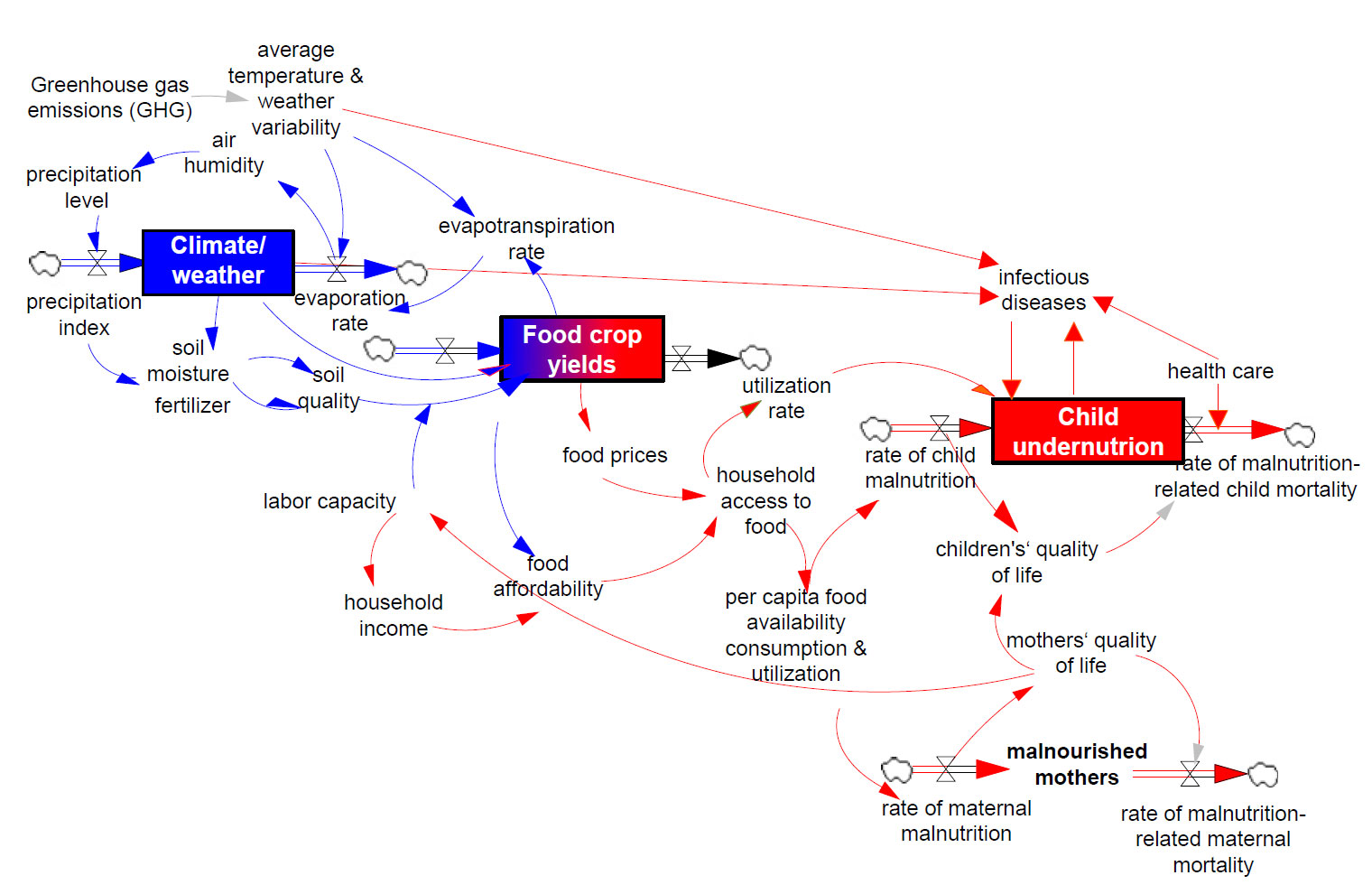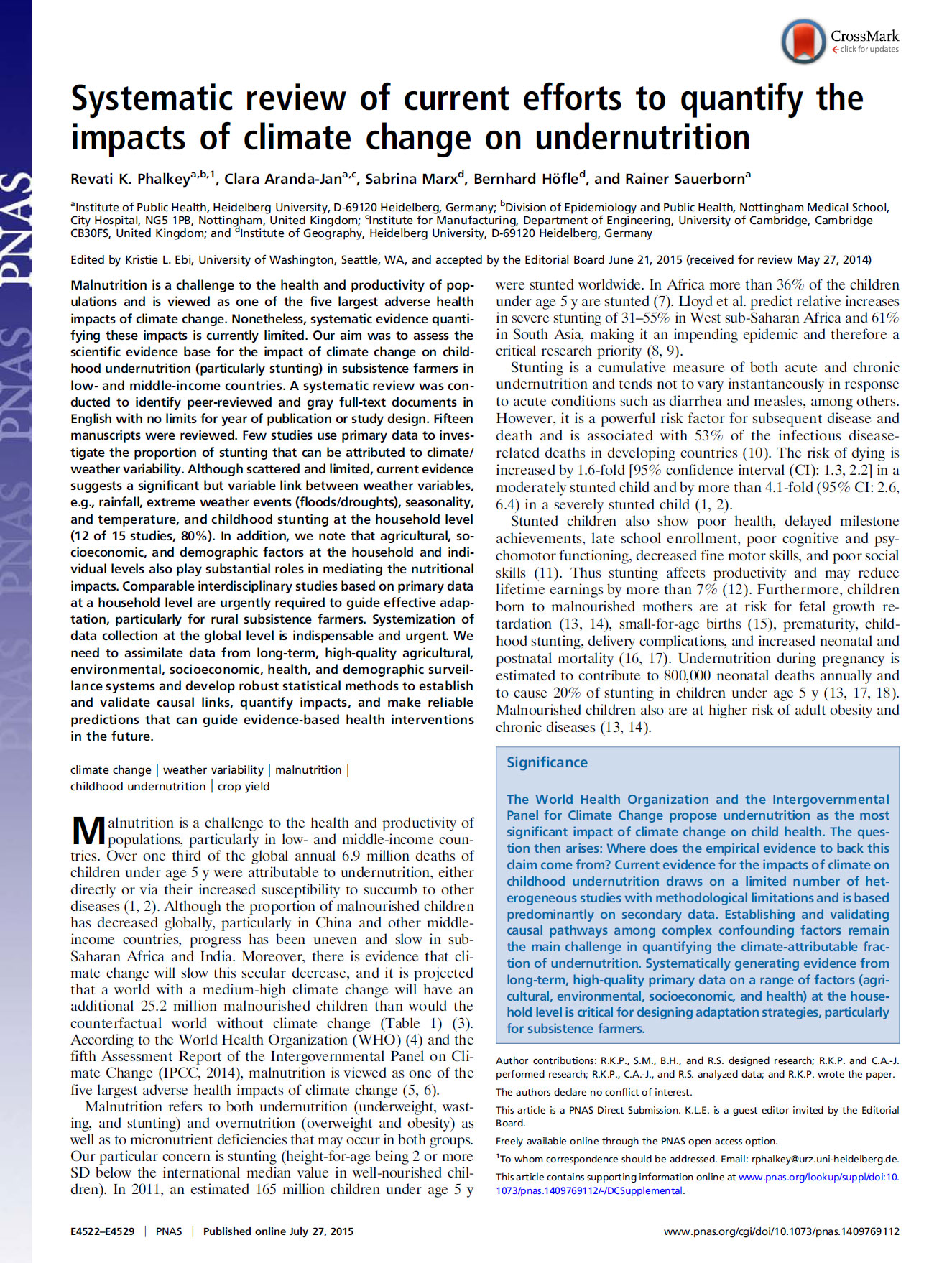Malnutrition is a challenge to the health and productivity of populations and is viewed as one of the five largest adverse health impacts of climate change. Nonetheless, systematic evidence quantifying these impacts is currently limited. Our aim was to assess the scientific evidence base for the impact of climate change on childhood undernutrition (particularly stunting) in subsistence farmers in low- and middle-income countries. A systematic review was conducted to identify peer-reviewed and gray full-text documents in English with no limits for year of publication or study design. Fifteen manuscripts were reviewed. Few studies use primary data to investigate the proportion of stunting that can be attributed to climate/weather variability. Although scattered and limited, current evidence suggests a significant but variable link between weather variables, e.g., rainfall, extreme weather events (floods/droughts), seasonality, and temperature, and childhood stunting at the household level (12 of 15 studies, 80%). In addition, we note that agricultural, socioeconomic, and demographic factors at the household and individual levels also play substantial roles in mediating the nutritional impacts. Comparable interdisciplinary studies based on primary data at a household level are urgently required to guide effective adaptation, particularly for rural subsistence farmers. Systemization of data collection at the global level is indispensable and urgent. We need to assimilate data from long-term, high-quality agricultural, environmental, socioeconomic, health, and demographic surveillance systems and develop robust statistical methods to establish and validate causal links, quantify impacts, and make reliable predictions that can guide evidence-based health interventions in the future.
Significance: The World Health Organization and the Intergovernmental Panel for Climate Change propose undernutrition as the most significant impact of climate change on child health. The question then arises: Where does the empirical evidence to back this claim come from? Current evidence for the impacts of climate on childhood undernutrition draws on a limited number of heterogeneous studies with methodological limitations and is based predominantly on secondary data. Establishing and validating causal pathways among complex confounding factors remain the main challenge in quantifying the climate-attributable fraction of undernutrition. Systematically generating evidence from long-term, high-quality primary data on a range of factors (agricultural, environmental, socioeconomic, and health) at the household level is critical for designing adaptation strategies, particularly for subsistence farmers.
Citing this research: Phalkey, R.K., Aranda-Jan, C., Marx, S., Höfle, B. & Sauerborn, R. (2015): Systematic review of current efforts to quantify the impacts of climate change on undernutrition. Proceedings of the National Academy of Sciences (PNAS). Vol. 112 (33), pp. E4522-E4529.
The publication in the Proceedings of the National Academy of Sciences (PNAS) is a collaboration between GIScience Heidelberg and the Institute of Public Health Heidelberg. The project was made possible by the Heidelberg Center for the Environment (HCE). Furthermore, we could already present a joint paper on Geographic information analysis and web-based geoportals to explore malnutrition in Sub-Saharan Africa in 2014 (BMC Public Health).




